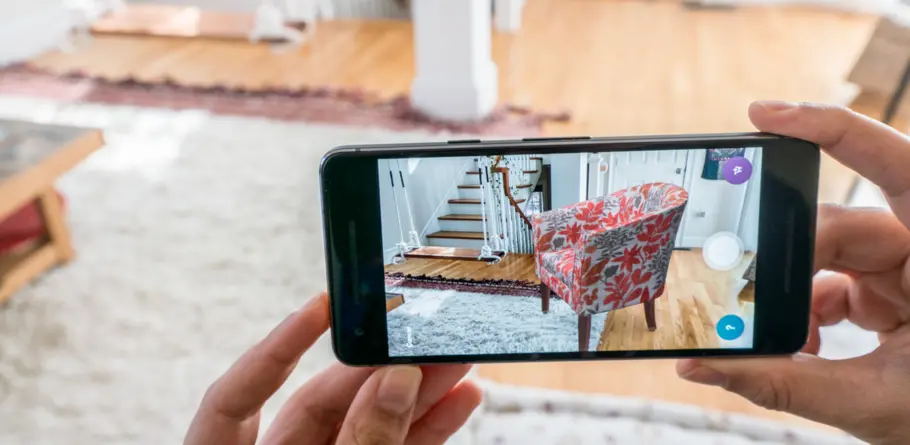Holograms for home: how Wayfair is using augmented reality to transform the shopping experience.

Augmented reality (AR) has advanced in leaps and bounds of late, but brands are really only scratching the surface of what it can enable, not only for shopping, but the broader customer experience. Brands like American e-commerce company, Wayfair, are proving that AR can serve as a useful touchpoint, drive likelihood of purchase and deepen customer engagement.
Wayfair’s “View in Room” is an AR-powered feature of their mobile shopping app. Using a smartphone or tablet, customers can “place” 3D models of Wayfair products in their homes to test what they might look like, helping them visualize furniture and décor in the context of their own spaces.
Wayfair’s foray into AR solved a challenge around scaling product content. According to Mike Festa, Director of Wayfair Next, the team driving the company’s AR efforts, “Our photo studios were inundated with a ton of products coming in and we wanted to scale that up, but logistically it’s difficult to get all products to the same photo studio. So we looked into using 3D modeling, which worked well and since we were doing that for visualization, the by-product was that we were going to have all these 3D models which we could then use for AR.”
AR provides context that online shoppers crave
While producing AR content happened to serve a need that Wayfair had around generating product imagery, that wasn’t the primary goal of using the technology. AR affords Wayfair new means to provide information during the shopping process. According to Festa, “The benefit of AR over shopping in a traditional brick-and-mortar store is that customers can actually see a product in their own home – to scale. We think this helps answer a lot of those questions that customers can’t answer in a store where the lighting is different, the ceiling is usually much higher, the product is in a entirely different environment.”
As part of Wayfair’s View in Room, customers can screenshot the placement of a piece in their home and share it with others. The ability to get feedback from family, roommates or even designers mimics the social aspect of shopping in-person, providing customers with a way to get feedback from others when browsing. Festa added, “The sharing feature makes the experience a lot more social and provides one of the other things I think customers shopping in the ‘Home’ category want: confidence or approval from other people.”
Consistent branding keeps customers grounded
When Wayfair built the initial version of View in Room, it was in the early days of AR, so best practices for design and UX for the environment were basically nonexistent. Instead, the team leaned on their internal design team to leverage existing code to build an experience that would be consistent with other Wayfair properties.
Wayfair has deep brand guidelines that are very specific by use case, but that didn’t keep the team from testing to ensure that the experience was legible and brand consistent. “In general, we’re trying to basically show the Wayfair brand as fun, friendly and personal. Our font choices across the entire Wayfair experience from app, to web, to email, all work to convey common branding and influence customer’s emotions,” Festa emphasized. “We took more consideration to legibility for the AR experience because of the way the resolution gets distorted, having small fonts can really detract from the experience.”
The future is mixed reality
Wayfair has witnessed positive trends in user engagement with their efforts; it appears that customers that use the AR feature are more likely to purchase. As the technology evolves, Festa says the focus is to continue increasing the realism and open up the ways customers can use AR.
Festa is hopeful that in the future Wayfair can leverage AR to allow customers to visualize multiple products together, or get even more contextualized, allowing customers to do things like filter product searches based on the amount of space they have in their home.
“Placing products in the screen is only scratching the surface; there are things like putting together an entire scene with multiple products or understanding the spatial dimensions that take AR even further. The closer we can get to that realism, the more confident the customer is going to be in their purchase, and the more delighted we can make them by giving them inspiration to truly reimagine their space.”











